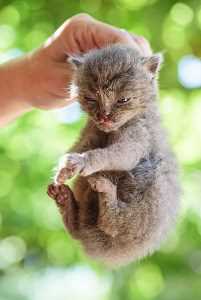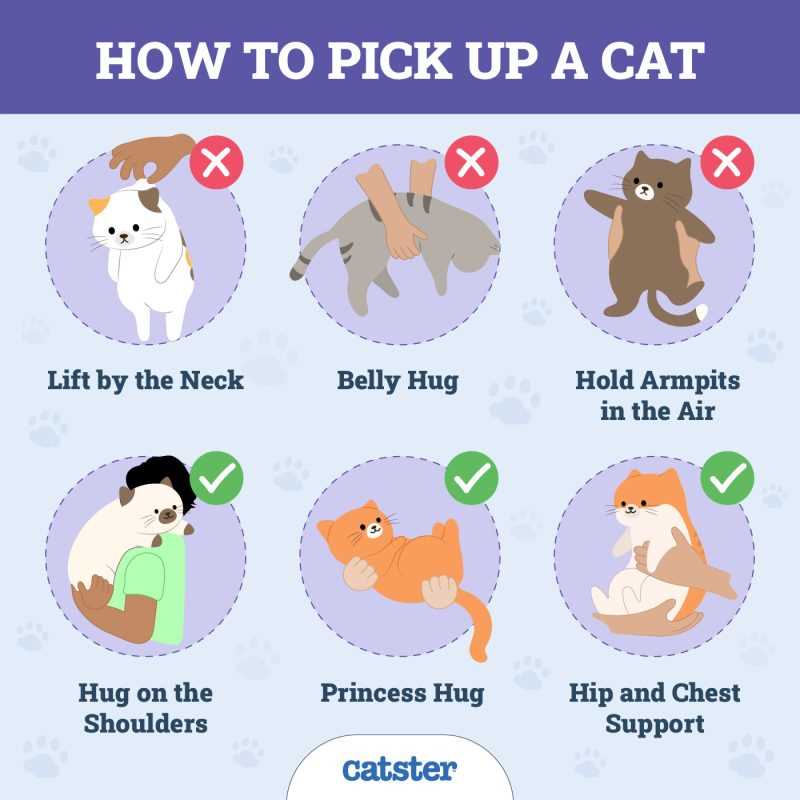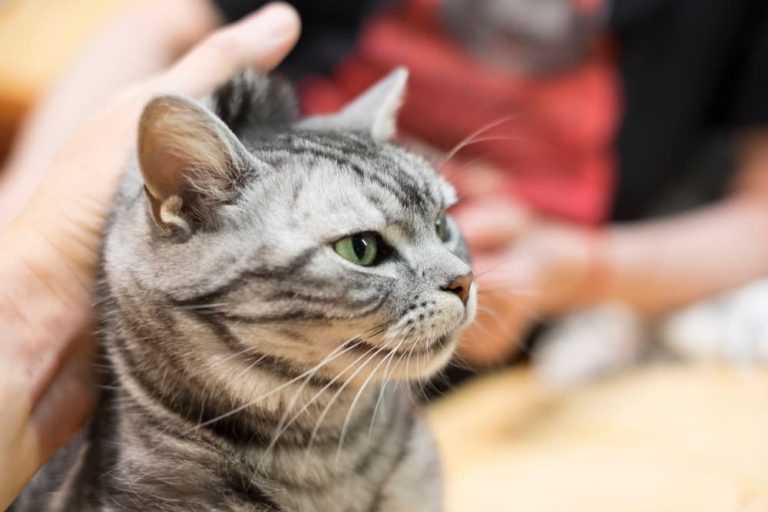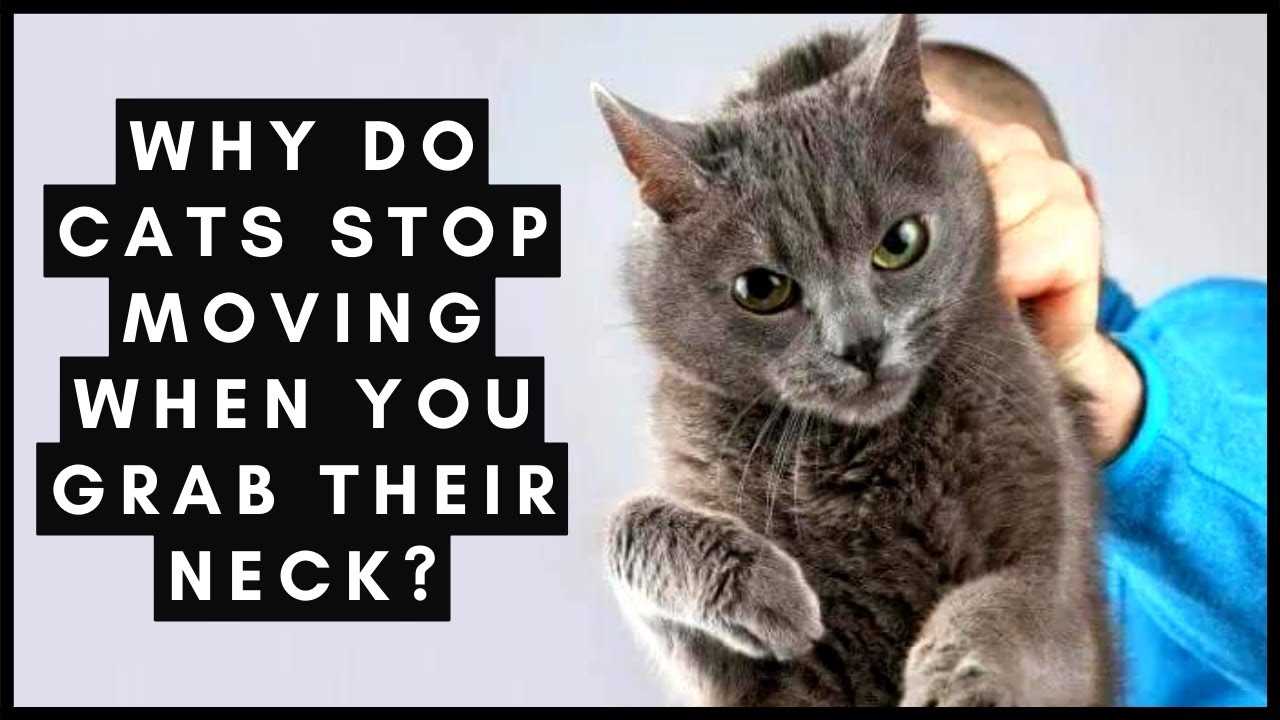It’s not just a reflex; it’s a response rooted in instinct. When my human friend reaches for my scruff, I often find myself going still. This behavior is tied to the way my ancestors were carried by their mothers, who would gently grasp them by the nape. It triggers a sense of submission and safety, allowing me to momentarily freeze and assess the situation.
In moments like these, I rely on my innate survival instincts. The freezing can serve as a defense mechanism, allowing me to blend into my surroundings and avoid potential threats. This reaction is a fascinating blend of trust and self-preservation, showcasing the complex nature of our interactions with humans.
To better connect with me, it’s essential to approach gently and avoid sudden movements. Understanding this response can foster a deeper bond, ensuring that our encounters remain positive and stress-free. After all, while I may freeze at times, I also appreciate the warmth and love from my human companions.
Understanding the instinctual response of felines to neck handling

It’s crucial to acknowledge that my reaction stems from deep-rooted instincts. When someone seizes the scruff area, a reflex kicks in. This behavior is reminiscent of how my mother would carry me as a kitten, leading to a state of immobility. This reaction is not just about fear; it’s a part of my survival toolkit, allowing me to assess the situation without immediate physical response.
Physiological factors behind the response

When someone grabs me by the scruff, my body releases specific hormones, likely adrenaline. This surge prepares me for potential threats, redirecting my energy towards either escape or stillness. My heart rate might increase, but my muscles may tense up, creating a paradox of readiness yet calmness. This dual state is a protective mechanism, helping me decide my next move wisely.
Social implications of this behavior

Through my interactions, I’ve noticed that not all beings respond similarly. Some may react with aggression, while others remain passive like me. This variability often depends on past experiences and socialization. Understanding these nuances can enhance our bonds, allowing humans to engage with us in ways that respect our comfort zones.
Impact of Early Experiences on a Feline’s Reaction to Being Held
To shape a relaxed demeanor towards being picked up, early interactions play a significant role. Kittens exposed to gentle handling from a young age often develop a positive association with being held. This could lead to a more comfortable response later in life.
Key Factors Influencing Responses
- Socialization: Early encounters with humans and other animals can enhance trust. The more positive experiences kittens have, the less likely they are to react with fear or anxiety.
- Environment: A stable, loving home environment contributes to a sense of security. Kittens raised in chaotic or stressful settings may develop negative associations with being handled.
- Breeding Practices: Some breeds are more predisposed to being affectionate and tolerant of handling. Scottish Folds, like me, often enjoy human interaction if socialized properly.
Recommendations for Positive Associations
- Gently handle young kittens regularly, ensuring that interactions are calm and pleasant.
- Use treats and praise during handling to create a positive reinforcement loop.
- Avoid forcing contact; let them approach you on their terms to build confidence.
Understanding these early influences can lead to more harmonious interactions in the future. For more information related to feline behavior, you might find this link helpful: how to tell how long a cat has been dead.
Handling Tips to Ensure Comfort

Always approach me calmly, using gentle movements. Quick actions can startle me and trigger a defensive response. Speak softly as you get closer; your voice can be reassuring.
Support my body properly by placing one hand under my chest and the other under my hindquarters. This gives me a sense of security, making me more relaxed. Avoid lifting me by my front legs or scruff, as this can be uncomfortable.
If I seem tense, give me space. Let me come to you when I feel ready. Patience is key; forcing interactions might lead to stress. Use treats to build positive associations with being held.
Provide a cozy blanket or familiar item nearby. Familiar scents can create a calming environment. Respect my boundaries; if I wiggle or try to escape, it’s a sign I’m not comfortable.
Practice gentle handling regularly, allowing me to acclimate to being held without feeling threatened. Frequent, short sessions can help me become more accustomed to being picked up.
Always watch for body language. If my ears are back or my tail is flicking, I may be feeling anxious. Adjust your approach accordingly to create a safe experience.
Video:
It’s not just a reflex; it’s a response rooted in instinct. When my human friend reaches for my scruff, I often find myself going still. This behavior is tied to the way my ancestors were carried by their mothers, who would gently grasp them by the nape. It triggers a sense of submission and safety, allowing me to momentarily freeze and assess the situation.
In moments like these, I rely on my innate survival instincts. The freezing can serve as a defense mechanism, allowing me to blend into my surroundings and avoid potential threats. This reaction is a fascinating blend of trust and self-preservation, showcasing the complex nature of our interactions with humans.
To better connect with me, it’s essential to approach gently and avoid sudden movements. Understanding this response can foster a deeper bond, ensuring that our encounters remain positive and stress-free. After all, while I may freeze at times, I also appreciate the warmth and love from my human companions.
Understanding the instinctual response of felines to neck handling

It’s crucial to acknowledge that my reaction stems from deep-rooted instincts. When someone seizes the scruff area, a reflex kicks in. This behavior is reminiscent of how my mother would carry me as a kitten, leading to a state of immobility. This reaction is not just about fear; it’s a part of my survival toolkit, allowing me to assess the situation without immediate physical response.
Physiological factors behind the response

When someone grabs me by the scruff, my body releases specific hormones, likely adrenaline. This surge prepares me for potential threats, redirecting my energy towards either escape or stillness. My heart rate might increase, but my muscles may tense up, creating a paradox of readiness yet calmness. This dual state is a protective mechanism, helping me decide my next move wisely.
Social implications of this behavior

Through my interactions, I’ve noticed that not all beings respond similarly. Some may react with aggression, while others remain passive like me. This variability often depends on past experiences and socialization. Understanding these nuances can enhance our bonds, allowing humans to engage with us in ways that respect our comfort zones.
Impact of Early Experiences on a Feline’s Reaction to Being Held
To shape a relaxed demeanor towards being picked up, early interactions play a significant role. Kittens exposed to gentle handling from a young age often develop a positive association with being held. This could lead to a more comfortable response later in life.
Key Factors Influencing Responses
- Socialization: Early encounters with humans and other animals can enhance trust. The more positive experiences kittens have, the less likely they are to react with fear or anxiety.
- Environment: A stable, loving home environment contributes to a sense of security. Kittens raised in chaotic or stressful settings may develop negative associations with being handled.
- Breeding Practices: Some breeds are more predisposed to being affectionate and tolerant of handling. Scottish Folds, like me, often enjoy human interaction if socialized properly.
Recommendations for Positive Associations
- Gently handle young kittens regularly, ensuring that interactions are calm and pleasant.
- Use treats and praise during handling to create a positive reinforcement loop.
- Avoid forcing contact; let them approach you on their terms to build confidence.
Understanding these early influences can lead to more harmonious interactions in the future. For more information related to feline behavior, you might find this link helpful: how to tell how long a cat has been dead.
Handling Tips to Ensure Comfort

Always approach me calmly, using gentle movements. Quick actions can startle me and trigger a defensive response. Speak softly as you get closer; your voice can be reassuring.
Support my body properly by placing one hand under my chest and the other under my hindquarters. This gives me a sense of security, making me more relaxed. Avoid lifting me by my front legs or scruff, as this can be uncomfortable.
If I seem tense, give me space. Let me come to you when I feel ready. Patience is key; forcing interactions might lead to stress. Use treats to build positive associations with being held.
Provide a cozy blanket or familiar item nearby. Familiar scents can create a calming environment. Respect my boundaries; if I wiggle or try to escape, it’s a sign I’m not comfortable.
Practice gentle handling regularly, allowing me to acclimate to being held without feeling threatened. Frequent, short sessions can help me become more accustomed to being picked up.
Always watch for body language. If my ears are back or my tail is flicking, I may be feeling anxious. Adjust your approach accordingly to create a safe experience.
Video:
It’s not just a reflex; it’s a response rooted in instinct. When my human friend reaches for my scruff, I often find myself going still. This behavior is tied to the way my ancestors were carried by their mothers, who would gently grasp them by the nape. It triggers a sense of submission and safety, allowing me to momentarily freeze and assess the situation.
In moments like these, I rely on my innate survival instincts. The freezing can serve as a defense mechanism, allowing me to blend into my surroundings and avoid potential threats. This reaction is a fascinating blend of trust and self-preservation, showcasing the complex nature of our interactions with humans.
To better connect with me, it’s essential to approach gently and avoid sudden movements. Understanding this response can foster a deeper bond, ensuring that our encounters remain positive and stress-free. After all, while I may freeze at times, I also appreciate the warmth and love from my human companions.
Understanding the instinctual response of felines to neck handling

It’s crucial to acknowledge that my reaction stems from deep-rooted instincts. When someone seizes the scruff area, a reflex kicks in. This behavior is reminiscent of how my mother would carry me as a kitten, leading to a state of immobility. This reaction is not just about fear; it’s a part of my survival toolkit, allowing me to assess the situation without immediate physical response.
Physiological factors behind the response

When someone grabs me by the scruff, my body releases specific hormones, likely adrenaline. This surge prepares me for potential threats, redirecting my energy towards either escape or stillness. My heart rate might increase, but my muscles may tense up, creating a paradox of readiness yet calmness. This dual state is a protective mechanism, helping me decide my next move wisely.
Social implications of this behavior

Through my interactions, I’ve noticed that not all beings respond similarly. Some may react with aggression, while others remain passive like me. This variability often depends on past experiences and socialization. Understanding these nuances can enhance our bonds, allowing humans to engage with us in ways that respect our comfort zones.
Impact of Early Experiences on a Feline’s Reaction to Being Held
To shape a relaxed demeanor towards being picked up, early interactions play a significant role. Kittens exposed to gentle handling from a young age often develop a positive association with being held. This could lead to a more comfortable response later in life.
Key Factors Influencing Responses
- Socialization: Early encounters with humans and other animals can enhance trust. The more positive experiences kittens have, the less likely they are to react with fear or anxiety.
- Environment: A stable, loving home environment contributes to a sense of security. Kittens raised in chaotic or stressful settings may develop negative associations with being handled.
- Breeding Practices: Some breeds are more predisposed to being affectionate and tolerant of handling. Scottish Folds, like me, often enjoy human interaction if socialized properly.
Recommendations for Positive Associations
- Gently handle young kittens regularly, ensuring that interactions are calm and pleasant.
- Use treats and praise during handling to create a positive reinforcement loop.
- Avoid forcing contact; let them approach you on their terms to build confidence.
Understanding these early influences can lead to more harmonious interactions in the future. For more information related to feline behavior, you might find this link helpful: how to tell how long a cat has been dead.
Handling Tips to Ensure Comfort

Always approach me calmly, using gentle movements. Quick actions can startle me and trigger a defensive response. Speak softly as you get closer; your voice can be reassuring.
Support my body properly by placing one hand under my chest and the other under my hindquarters. This gives me a sense of security, making me more relaxed. Avoid lifting me by my front legs or scruff, as this can be uncomfortable.
If I seem tense, give me space. Let me come to you when I feel ready. Patience is key; forcing interactions might lead to stress. Use treats to build positive associations with being held.
Provide a cozy blanket or familiar item nearby. Familiar scents can create a calming environment. Respect my boundaries; if I wiggle or try to escape, it’s a sign I’m not comfortable.
Practice gentle handling regularly, allowing me to acclimate to being held without feeling threatened. Frequent, short sessions can help me become more accustomed to being picked up.
Always watch for body language. If my ears are back or my tail is flicking, I may be feeling anxious. Adjust your approach accordingly to create a safe experience.






